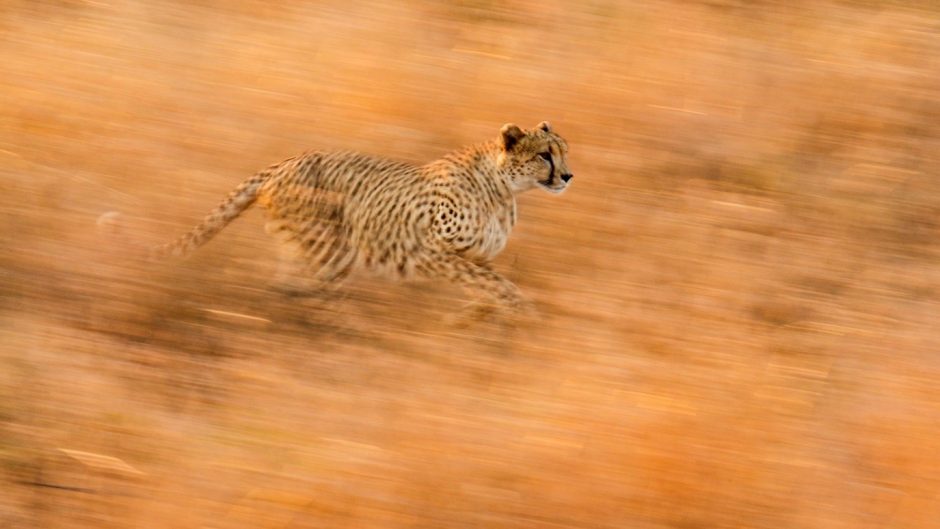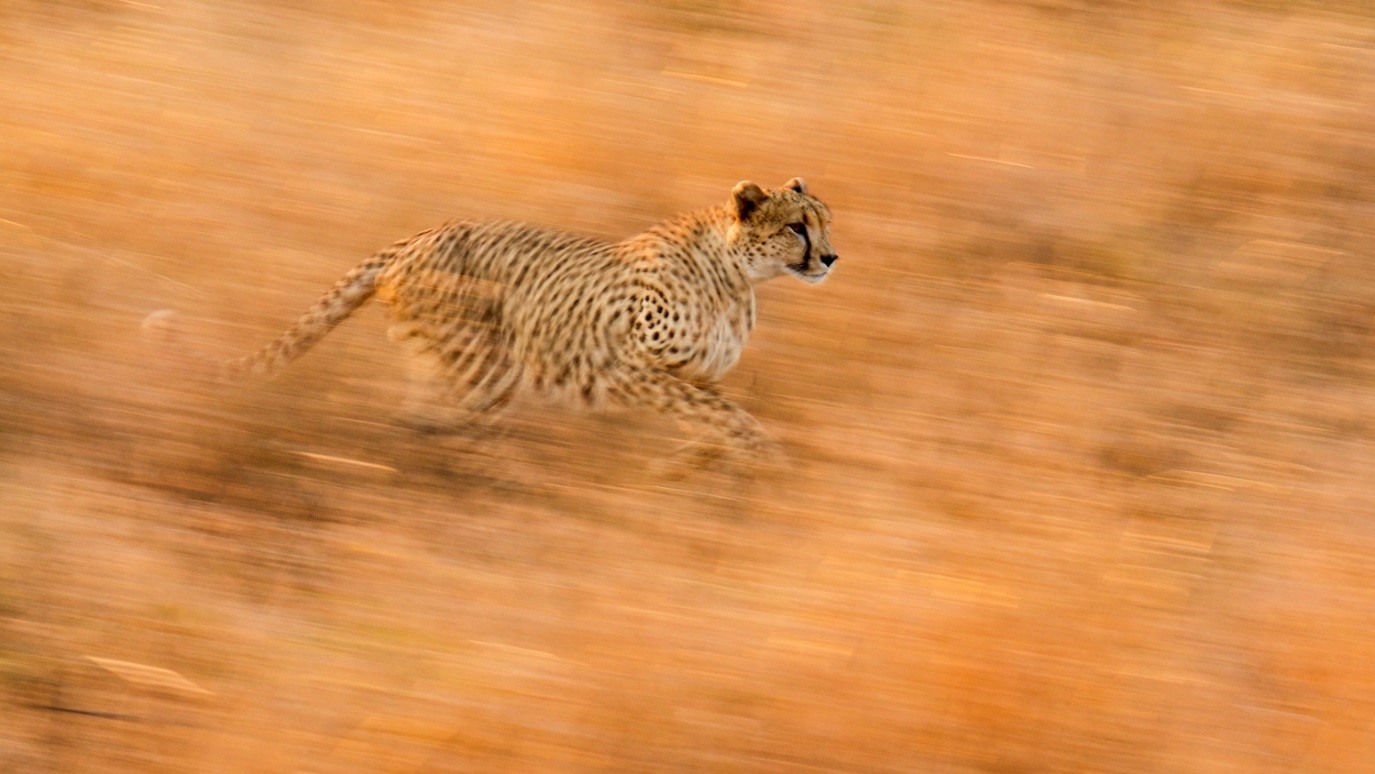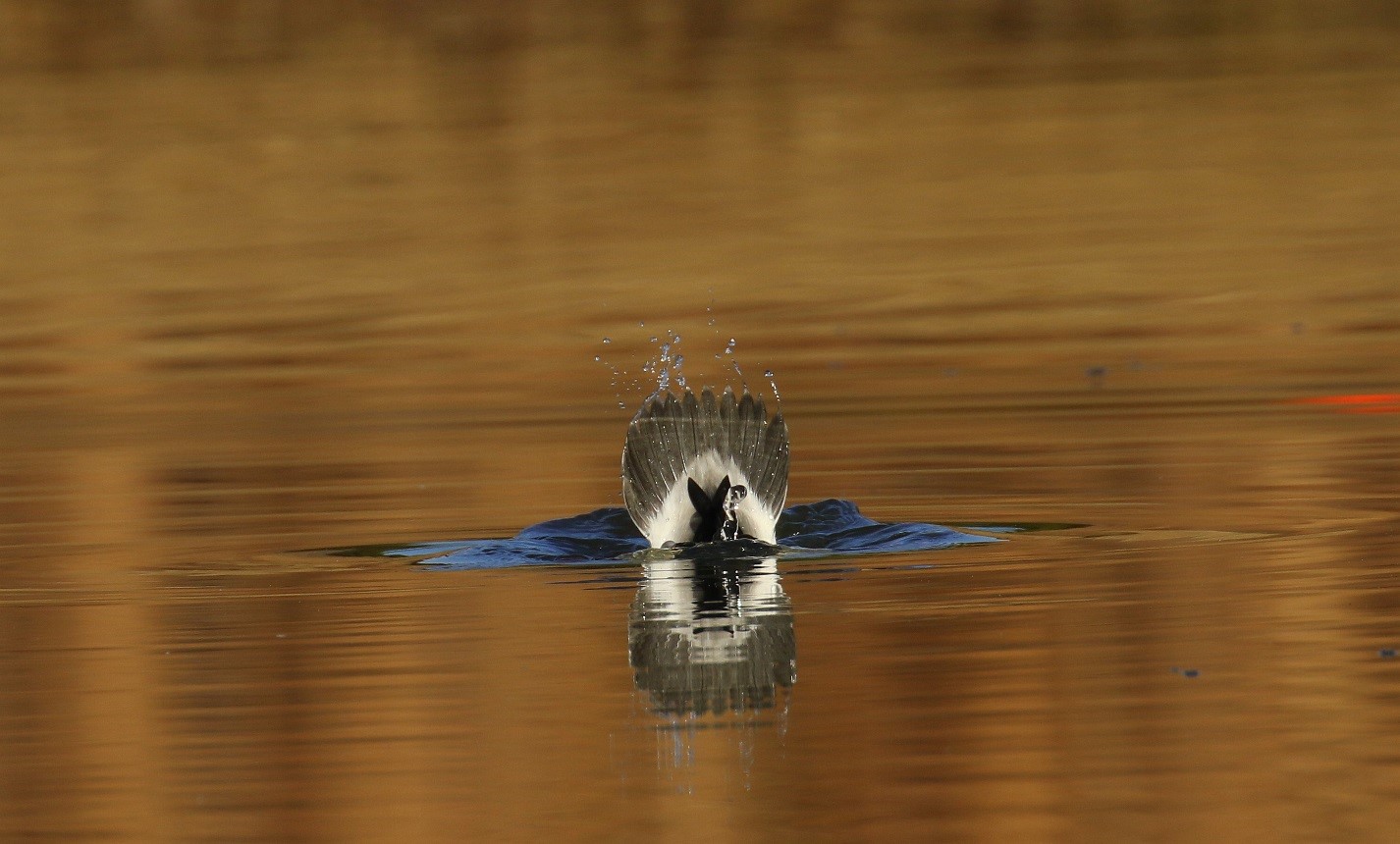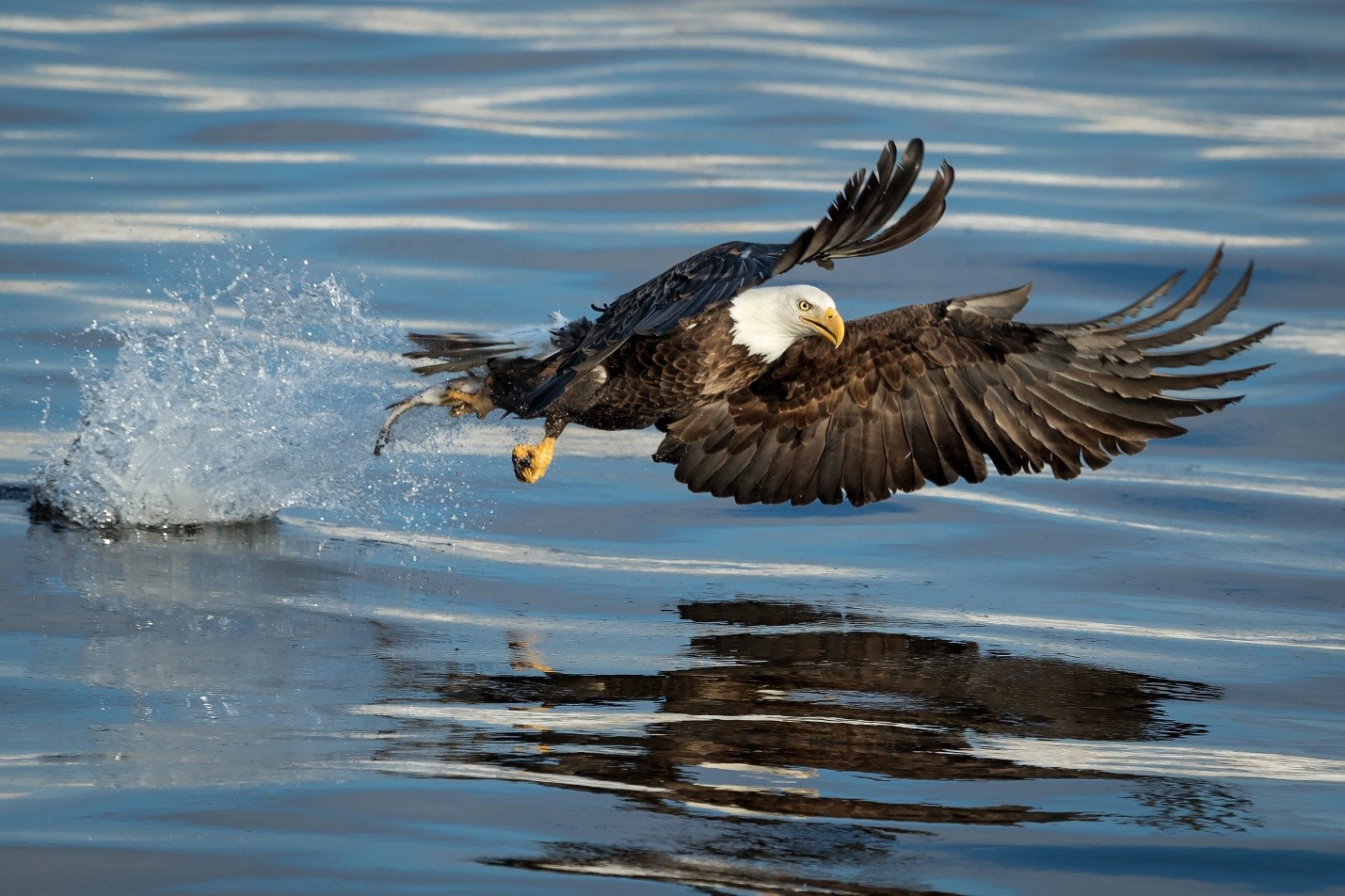
Winner of our “Showcasing Shutter Speed” Challenge
Wow—this was certainly one of the most FUN photo challenges to review! The entries were all truly magnificent, and choosing a winner was quite difficult. Between rustling leaves, perfectly timed action shots, and spectacular uses of slow exposures for incorporating motion into the shot, there was an impressive variety.
For this challenge, I want to showcase one winner as well as two honorable mentions.
First, the grand winner of this Showcasing Shutter Speed photo challenge is Douglas Croft with a stunning capture of a cheetah, racing across Kruger National Park in a shot he calls Motion in Kruger. Very fitting!

Motion in Kruger, by Douglas Croft. f/13, 1/30th of a second, ISO 400; Slow Shutter Pan Technique
Before I go too much into my own thoughts on the photo, I want to copy Douglas’ own description of the shot, as his own thought process is spot on and a great lesson for us all in the world of nature photography.
Kruger National Park. It was early morning when we saw a coalition of four cheetahs coming toward us across the plain. This one was distracted and fell behind the others. Once he saw he’d been left, he raced to catch up with them and I caught him nicely with a slow shutter pan. The slow shutter was quite by accident however. As he ran toward us, I realized I had too much lens and grabbed my shorter setup out of the seat pouch. In doing so, I inadvertently dialed the aperture down, slowing the shutter. Once I took the shot, I silently cursed, thinking I had missed my opportunity. I didn’t see what a gift I’d been given till that night when I downloaded my cards to the computer!
Again, excellent takeaways from this thought process and truly remarkable that it might have been somewhat by accident! Maybe in the future, you’ll want to do this on purpose, but the elements that go into this are spot on. One easy way to dial in a quick slow shutter is to ramp up the aperture (f-stop) setting to a higher than normal level. If you’re familiar with apertures, f/13 is usually far too much for anything but a very bright, higher ISO, landscape shot. Certainly far too high to freeze motion. However, as we see, Douglas went there, and did the opposite—he blurred the moving subject.
Now, Douglas’ instincts may have kicked in when he heard the slow shutter, quickly switching tactics and moving his lens in a slow-shutter pan. Basically this means that as the shutter was open for that split 1/30th of a second, he was tracking the cheetah with his lens. What this did was allow for the face of the cheetah to remain in the exact same position in the camera frame (i.e., sensor) throughout the 1/30th of a second, since the cheetah was moving. However, the grasses are blurred because they of course are not moving a the same pace as the cheetah. And the rest of the cheetah’s body is blurred because it is moving in a different way than Douglas’ lens pan. For example, he may be panning left to right, again matching the same pace as the cheetah’s face, while the body is moving a bit up and down, side to side, front to back, as the muscles move in their own ways. And by the way, look at that swirl and rotation of the front shoulder…simply perfect.
This is not an easy thing to do, I must say, as everything has to be just right. But, let’s use this brilliant accident and learn that the settings and techniques used can be deliberately done to capture a similar scene. Now, it’s our job to get out and try it!
Next, I want to go the other way and show two other spectacular photos that opted to use a quick shutter speed to freeze motion. These two honorable mentions go to Sujata Roy and Paula Scherbroeck.

Duck-Tale, Sujata Roy. f/8, 1/1000th of a second, ISO 250; Motion-stop Technique

Dinner Tonight, Paula Scherbroeck. f/5.6, 1/2000th of a second, ISO 320; Motion-stop Technique
Both of these are fantastic, aren’t they!? What I want to particularly draw your attention to are the camera settings for both. They are relatively similar, in that they both have moderate apertures (one stop from each other) and both very fast shutter speeds with lower ISOs. There are some specific takeaways from this. 1) to freeze motion you really need to be upwards of 1/1000th of a second or faster, 2) You want to try and use moderate apertures to allow a decent depth of field (opposed to very wide open apertures, which could cause you to miss sharpness on the subject in the frenzy of freezing motion), and 3) use ISO to balance out the other settings (i.e., if it’s bright enough, like in these photos, you can use low ISOs, but sometimes you’ll need to consider ISO 800 and above).
Then, one final comment that applies to both of these shots…take a look at the composition. Really great stuff! This just goes to show you that you can capture an immaculate moment, but you still need to have pleasing composition for it to be an other-worldly shot, as these are. One technique that I use, and perhaps our star photographers here will agree, is to shoot wider than you think you’ll need. This allows you to crop in after the fact and take control of the composition later, rather than trying to nail the composition, as you’re frantically trying to get a diving duck or fishing eagle.
As always, thanks to everyone who submitted for this photo challenge. Can’t wait to see entries for the next challenge…stay tuned! And keep the great photos coming!
All the best,

Court
1 Comment

Brittany Salazar
May 6, 2018 at 9:02 am
Thanks for sharing these magnificant photos and all of the techniques used to grab them!!